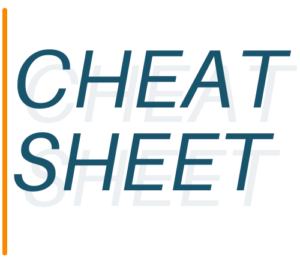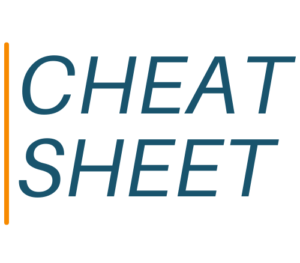
Cheat Sheet: Renewables Targets
Here are 15 targets who covered renewable energy sometime in 2024. None of the names come from Renewables Now (Bulgaria), Renew Economy (Australia), Energy Live News (UK) or Solar Quarter (India).

Here are 15 targets who covered renewable energy sometime in 2024. None of the names come from Renewables Now (Bulgaria), Renew Economy (Australia), Energy Live News (UK) or Solar Quarter (India).

You’ll find this cheat sheet unusual: it comprises 11 targets ranging from Tier 1 to telecom trades to government tech. The intertwined topics of smart cities and urban planning touch technology and society, but also business.

Here are 15 top reporters expert in the field of network infrastructure. Many are the usual suspects. The audience sizes are small, relative to other tech segments.

By subscriber request, here’s a fresh look at B2B reporters who cover product announcements — 82 in all. “Products” also can mean services — in short, it’s the news in your news cycle that needs to be covered the week it’s announced.

Our previous IAM cheat sheet was less than a year old but needed a good scrub. Fewer reporters cover IAM these days. We did find 11, whose names are below. Few were on the last one.

Here’s a cheat sheet comprising 11 reporters who recently covered a cybersecurity survey as news. We carried over three targets from our Sept. 2022 cheat sheet; all other names are new.

We offer 19 cybersecurity podcasts, the vast majority being from independent experts. We omitted podcasts produced by vendors (or tried to), and those that were obviously pay-to-play. You’ll find lots of podcasts addressing how to land a job in cybersecurity.

Here’s a cheat sheet on the top 17 most prolific cybersecurity reporters as of April 2024. They are the ones who write more frequently about cybersecurity topics than other beat reporters.

Strangely enough, there’s not a whole lot of coverage on how banks are using AI. Where are all the curious journalists?

We’re proud to introduce the SWMS Paid Content Directory 2023. Modeled after our contributed content gatekeepers directory, the resource is designed to help point our subscribers in the right direction when they have budget to spend on “saying it the way you want to.”
YOUR ACCOUNT
FRIDGE NOTES
Indy media business experts Brian Morrissey and Jacob Cohen Donnelly have built two very successful businesses with both newsletters and face-to-face events. Axios has noticed this and has decided to get into the event space focusing on the economics of publishing, which of course is a topic close to home. Announced this week: an Axios event coming up in September. Hosts: Sara Fischer and Kerry Flynn.
ServiceNow has launched a special report on Fortune to jumpstart strategic spending on AI, illustrating workarounds for implementation problems, and otherwise illuminating the path to integrating AI into software operations. This is a branding exercise, of course, and perhaps is a sign that earned media is just not going get a strategic job done.
AIQ shows a big idea and how to leverage the prestige of Fortune without having to pitch stories to accomplish that same objective: you can just buy shelf space. In the case of AIQ, Fortune hired freelancer Sage Lazzaro — who used to work on staff there to create high-level content. So let’s keep an eye on this project, monitoring how well-respected it is… and whether its content gets surfaced in search engines.
Here are the details — Choose from 5 categories and 30+ subcategories. The awards are being promoted by Bhava Communications, an SWMS subscriber.
The guy also is the full-time “chairman” of Bally and Sassoon. On top of that, he’s also chairman of Foundry and 13 other companies. Well, 14, if you count his own private equity firm. How much time will he put into TC, understanding the subtleties of tech edit?
Julie opens up to host Dave Reddy.. it’s a good listen. BVM is a SWMS subscriber.